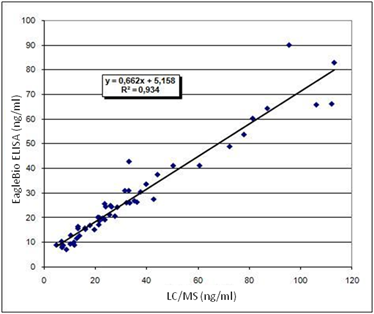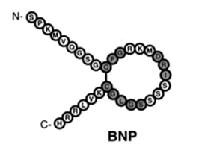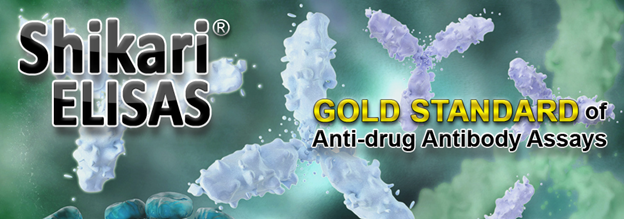
Eagle Biosciences’ Vitamin Assay Kit line offers an array of interesting and sensitive assays for different vitamin analytes and research needs. Our 25-OH Vitamin D ELISA is a top seller at Eagle Biosciences and continues to be an outstanding tool for researchers in the fields of bone metabolism, endocrinology, immunology, nutrition, and cancer research. It offers a variety of advantages over other competing kits and has been a proven leader in the market, recognized for its robustness, simplicity, and excellent specificity to both D2 and D3.
Why Measure 25-OH Vitamin D with EagleBio’s Kit?
1. Excellent specificity: 100% specificity to both vitamin D2 and D3 due to utilization of a new monoclonal antibody.
2. Quick and simple test results: < 3 hours, room temperature incubations.
3. Fully automatable assay
4. Improved analyte release: only one step without the use of toxic substances.
5. Excellent correlation with LC/MS methods (see below):

Calibrated with NIST standards (National Institute of Standards and Technology, USA), DEQAS (Vitamin D External Quality Assessment Scheme, UK) quality assessment data and in-house quality control sera.
Eagle Biosciences’ 25-OH Vitamin D ELISA Assay Kit
This assay blends the usability and convenience of
clinical assays with the pricing and sensitivity of a research assay.
Related Kits:
Vitamin Assay Kits
Bone Metabolism Assay Kits
Related News:
Interesting Study Reveals Possible Link Between Vitamin D and Autism
New Publications for Select Vitamin Assays Kits
10 Reasons to Keep Up with Your Vitamin D Levels
Learn more about Vitamin D at Eagle Biosciences Biomarker Spotlight page dedicated to Vitamin D here:
Vitamin D Biomarker Spotlight



















